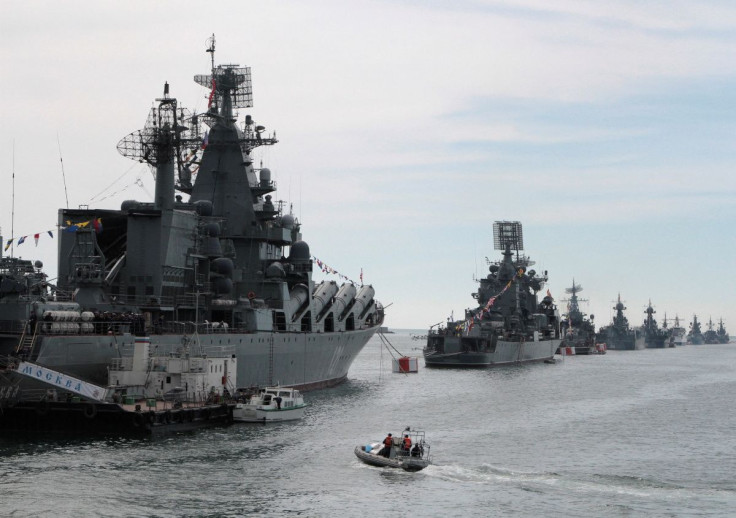With Support From US, Ukraine Is Rebuilding Its Navy Into A Force To Reckon With: Report
KEY POINTS
- Following the Russian invasion and annexation of Crimea in 2014, Ukraine lost 75% of its naval fleet
- The Ukrainian navy went into the war with a single frigate and various small combatants and patrol boats
- Ukraine's success lies in its technological ingenuity and ability to innovate and improvise
With the six patrol vessels supplied by the U.S. recently, the Ukraine Navy is steadily, but definitely building its reputation as an effective asymmetric force even as it faces a much larger and stronger adversary.
In June, as part of its $450 million in security assistance to Ukraine, the U.S. announced it was sending two 35-foot, small-unit riverine craft, six 40-foot maritime combat craft, and 10 34-foot, Dauntless Sea Ark patrol boats.
"These are, largely to protect the riverways and to enable Ukraine to maintain its control of the riverways. They can also be used in ... close-in coastal areas," a senior defense official said following the announcement.
According to defense analyst H I Sutton, the newly delivered 40-foot (12.2 meters) long "Defiant" patrol boats have started operating in the Black Sea as part of the Ukrainian navy. With two Cummins QSB 6.7 diesel engines, and driving twin water jets, Defiant patrol boats can reach speeds of up to 40 knots. The welded aluminum monohull design of the boat includes ballistic protection to increase combat survivability, the report by Sutton in Naval News said.
Earlier, following the Russian invasion and subsequent annexation of Crimea in 2014, Ukraine had lost 75% of its naval fleet, the majority of its helicopters and the country's ship repair capabilities.
Having lost the Sevastopol Naval Base and with almost 70% of its naval personnel having either defected or dismissed, Ukraine was left with just one frigate — a ship that had been deployed at the time. Since then, the U.S. the U.K. and other NATO countries have helped and guided Ukraine to rebuild its fleet as well as its ground and special operations forces.
When Russia invaded them on Feb. 24, the Ukrainian navy went into the war with a single frigate and various small combatants, patrol boats and auxiliaries. Most of them were either sunk or captured in the opening days of the conflict.
Meanwhile, the only Ukrainian frigate, the flagship of its fleet, the Hetman Sahaidachny, was scuttled — sunk on purpose in order to keep it from falling into Russian hands.
Supposedly the first image of Ukrainian Navy flagship Hetman Sahaidachny (U130) scuttled in Nikolaev.@RALee85 @CovertShores @OSINTEng pic.twitter.com/R3ECQsqA10
— Granger (@GrangerE04117) March 3, 2022
Now between the army, special operations command, border guard and navy, the Ukrainian armed forces reportedly have over 100 patrol boats, small craft and amphibious tractors that are mostly capable of riverine operations.
But just a few months into the war, Ukraine successfully turned the tide against Russia. As Sutton writes in the Naval News: "Ukraine has a tendency of reminding us, it's not what you have, it's what you do with it."
Much of Ukrainian success lies in the country's technological ingenuity and ability to innovate and improvise.
The first major blow for Moscow came with the sinking of the cruiser Moskva by Ukrainian forces who used locally-developed Neptune anti-ship missiles. Since then, the Ukrainian navy has been hunting for the Russian flagship Admiral Makarov, which seems to have been one of the ships hit by the recent daring drone attack carried out on Russia's Black Sea Fleet.

© Copyright IBTimes 2024. All rights reserved.





















